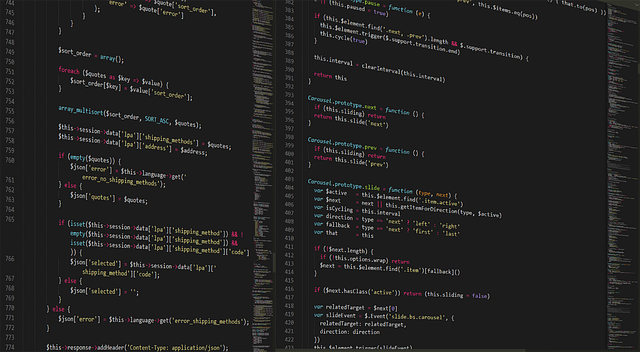Web and Mobile App Development & Support
Mobile and web applications require careful attention to security, usability, and performance. This includes development for Android and iOS, managing potential vulnerabilities, ensuring smooth publication processes, and applying basic app promotion techniques.

What Are the Key Steps in Developing Web and Mobile Applications?
The app development process follows a structured methodology that begins with thorough planning and requirement analysis. During the initial phase, developers work closely with stakeholders to define project scope, target audience, and core functionality. This is followed by creating wireframes and prototypes that visualize the user interface and map out user journeys.
The development phase involves selecting appropriate frameworks and technologies based on the target platforms. For cross-platform development, frameworks like React Native or Flutter offer efficiency, while native development provides platform-specific optimization. Testing occurs throughout the development cycle, including unit testing, integration testing, and user acceptance testing to ensure the application meets quality standards before deployment.
What Should You Consider When Building Android Apps?
Android app development presents unique considerations due to the platform’s diverse ecosystem and varying device specifications. Developers must account for different screen sizes, operating system versions, and hardware capabilities across thousands of Android devices. Material Design guidelines provide the foundation for creating consistent user interfaces that feel native to the Android platform.
Performance optimization becomes critical when targeting Android devices with varying processing power and memory limitations. This includes implementing efficient memory management, optimizing battery usage, and ensuring smooth performance across different device tiers. Additionally, developers must consider the Google Play Store’s requirements and guidelines for app submission and approval processes.
How Can You Address Common Security Issues in Mobile Applications?
Mobile application security requires a multi-layered approach to protect user data and prevent unauthorized access. Data encryption stands as the first line of defense, ensuring sensitive information remains protected both in transit and at rest. Implementing secure authentication mechanisms, including multi-factor authentication and biometric verification, helps prevent unauthorized account access.
Common vulnerabilities include insecure data storage, weak server-side controls, and insufficient transport layer protection. Developers must implement proper certificate pinning, conduct regular security audits, and follow OWASP Mobile Security guidelines. Regular security updates and patch management ensure applications remain protected against emerging threats and vulnerabilities.
Which Platforms Require Different Development Approaches?
Each platform demands specific development strategies and technical considerations. iOS development requires adherence to Apple’s Human Interface Guidelines and utilizes Swift or Objective-C programming languages. The iOS ecosystem offers more standardized hardware specifications but requires compliance with strict App Store review processes.
Web applications benefit from cross-platform compatibility but must address browser-specific behaviors and performance variations. Progressive Web Apps (PWAs) bridge the gap between web and mobile experiences, offering offline functionality and push notifications while maintaining web accessibility. Responsive design principles ensure consistent user experiences across different devices and screen sizes.
What Unique Insights Drive Successful App Development Worldwide?
Global app development trends reveal that successful applications prioritize localization and cultural adaptation beyond simple language translation. Regional preferences for payment methods, social features, and user interface design significantly impact app adoption rates. For instance, Asian markets often prefer feature-rich applications with integrated social elements, while Western markets tend to favor minimalist designs focused on specific functionalities.
Emerging markets present opportunities for lightweight applications that perform well on lower-end devices and slower network connections. Progressive Web Apps gain particular traction in regions with limited storage space or inconsistent internet connectivity, offering app-like experiences without requiring full downloads.
How Much Does Professional App Development Cost?
App development costs vary significantly based on complexity, platform requirements, and development approach. Simple applications with basic functionality typically range from $10,000 to $50,000, while complex enterprise applications can exceed $500,000. Cross-platform development using frameworks like React Native or Flutter can reduce costs by 30-40% compared to developing separate native applications.
| Development Type | Cost Range | Timeline | Key Features |
|---|---|---|---|
| Basic Mobile App | $10,000-$50,000 | 2-4 months | Simple UI, basic functionality |
| Medium Complexity App | $50,000-$150,000 | 4-8 months | Custom features, API integration |
| Enterprise Application | $150,000-$500,000+ | 8-18 months | Advanced security, scalability |
| Cross-Platform Solution | $30,000-$200,000 | 3-10 months | Multiple platforms, shared codebase |
Prices, rates, or cost estimates mentioned in this article are based on the latest available information but may change over time. Independent research is advised before making financial decisions.
What Are the Basics of Promoting Apps Effectively?
App promotion requires a strategic approach that begins before launch and continues throughout the application’s lifecycle. App Store Optimization (ASO) forms the foundation of organic discovery, involving keyword research, compelling descriptions, and high-quality screenshots and videos. Regular monitoring of app store analytics helps optimize listing performance and identify improvement opportunities.
Social media marketing, influencer partnerships, and content marketing create awareness and drive downloads. Paid advertising through platforms like Google Ads, Facebook Ads, and Apple Search Ads can accelerate user acquisition when properly targeted. Post-launch engagement strategies, including push notifications, in-app messaging, and regular feature updates, help maintain active user bases and encourage positive reviews.
Successful app development and support require balancing technical excellence with user-centered design and strategic marketing. By following established development methodologies, addressing security concerns proactively, and implementing effective promotion strategies, developers can create applications that not only function reliably but also achieve sustainable growth in competitive markets. Ongoing support and maintenance ensure applications continue meeting user expectations while adapting to evolving technological requirements and market demands.




